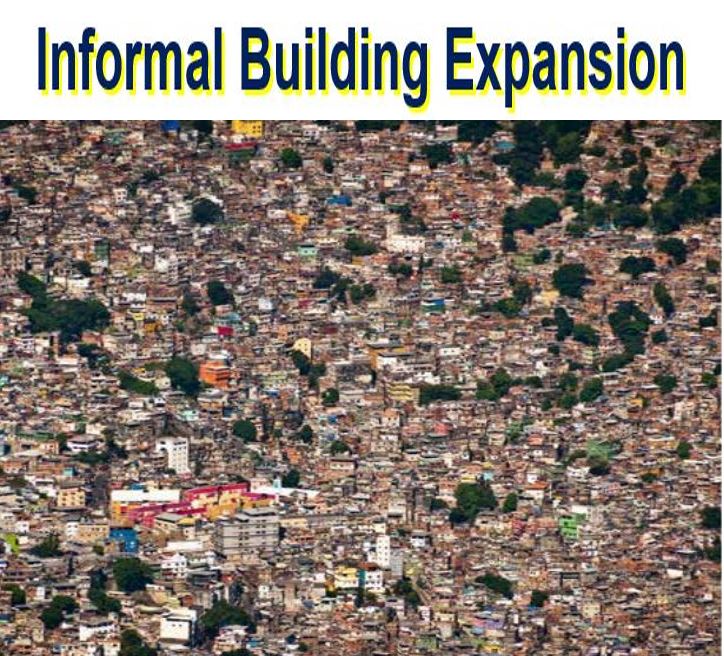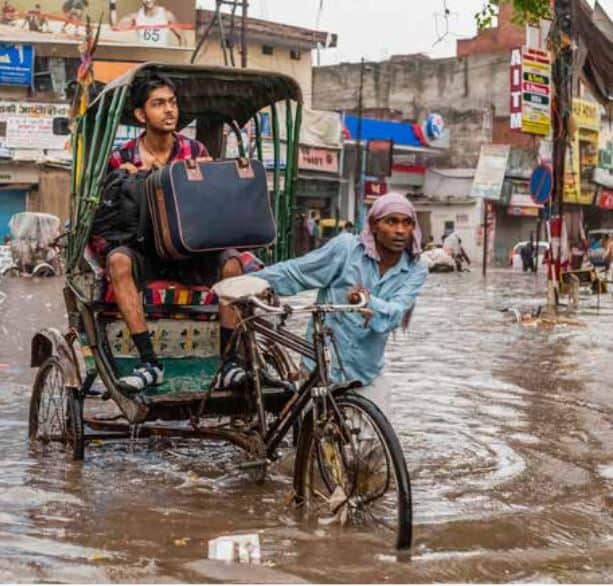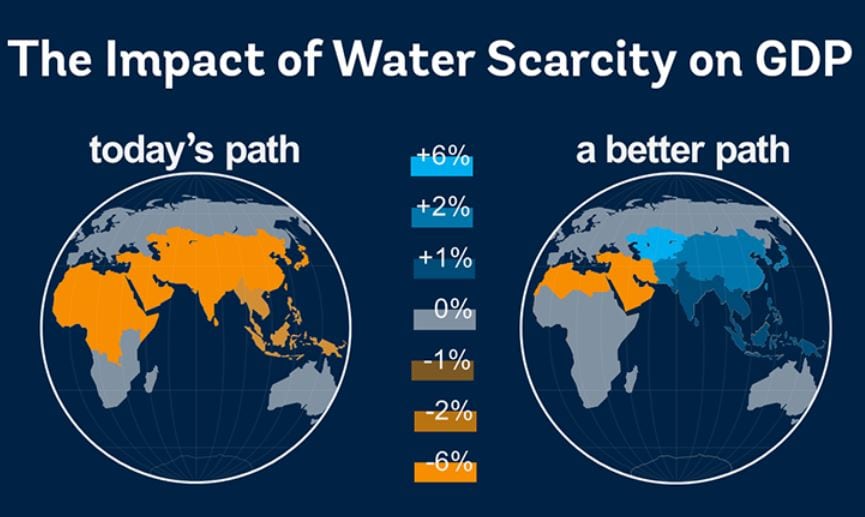More than 1bn people and 158 trillion dollars of assets globally are at risk from disaster caused by climate change, says the World Bank, which adds that we are ill-prepared for the extreme weather events, rising sea levels, floods and other nasty consequences of global warming.
By the middle of this century, about 1.3 billion people will be at risk from river and coastal floods, a new report warns.
The new report – The Making of a Riskier Future: How Our Decisions are Shaping the Future of Disaster Risk – urges governments and policymakers across the world to start taking drastic measures now, otherwise vast areas of our planet and a huge number of people will suffer disasters hitherto unseen in recorded history.
 Temperature time series for land, ocean and both land and ocean combined. Temperature scale is relative to the average global temperature across the duration of the time series. Since the middle of the last century, global temperatures have been rising. (Image: gfdrr.org)
Temperature time series for land, ocean and both land and ocean combined. Temperature scale is relative to the average global temperature across the duration of the time series. Since the middle of the last century, global temperatures have been rising. (Image: gfdrr.org)
Two problems will soon collide
Two growing problems that are occurring globally will soon collide:
1. Global warming will trigger a series of changes, including rising sea levels, more frequent and severe extreme weather events, which will make our environment more hostile.
2. The world’s population continues to rise and urbanization, much of it informal, continues apace. Urbanization refers to the movement of people from rural to urban areas.
John Roome, the World Bank Group’s Senior Director for Climate Change, said:
“With climate change and rising numbers of people in urban areas rapidly driving up future risks, there’s a real danger the world is woefully unprepared for what lies ahead.”
“Unless we change our approach to future planning for cities and coastal areas that takes into account potential disasters, we run the real risk of locking in decisions that will lead to drastic increases in future losses.”
 An example of informal building expansion, Rocinha, the largest ‘favela’ in Rio de Janeiro, Brazil. Favelas are called slums or shanty towns in English, and ‘cuidades perdidas’ in Mexico. As extreme weather events become more frequent and severe due to global warming, residents of favela-like communities will suffer the most. (Image: gfdrr.org)
An example of informal building expansion, Rocinha, the largest ‘favela’ in Rio de Janeiro, Brazil. Favelas are called slums or shanty towns in English, and ‘cuidades perdidas’ in Mexico. As extreme weather events become more frequent and severe due to global warming, residents of favela-like communities will suffer the most. (Image: gfdrr.org)
Many coastal cities heading for disaster
The report authors gathered and analyzed data from literature and case studies from across the world, and found that many hundreds of coastal cities are literally sinking – if you add to that problem the rise in sea levels, the annual losses in just 136 coastal cities are forecast to increase from $6 billion to over $1,000 billion by the year 2070.
The report gives Indonesia as an example of what lies ahead in many parts of the world – it forecasts river flood risk increasing by 166% over the next three decades, because of the rapid expansion of urban areas.
Indonesia’s coastal flood risk is likely to rise by 445%. In Katmandu, the risk of disasters from earthquakes is expected to jump by a factor of two to 50% by 2045, because of unregulated building expansion.
We need reliable risk information
Effective disaster risk management is only possible if we have access to reliable risk data. To help promote a move towards accessible, dynamic and actionable risk data, the GFDRR (Global Facility for Disaster Reduction and Recovery) and the World Bank are also releasing ThinkHazard! – the first ever open-source platform to provide hazard data and recommendations on how to minimize risk across eight hazards – landslides, volcanoes, tsunamis, coastal floods, cyclones, water scarcity, earthquakes and river floods – for 196 nations.
 Flash flood in Varanasi, India. Flooding will occur more often, for longer periods and more severely in many towns and large cities across the world. Their devastating effects will be worse along the coast. (Image: gfdrr.org)
Flash flood in Varanasi, India. Flooding will occur more often, for longer periods and more severely in many towns and large cities across the world. Their devastating effects will be worse along the coast. (Image: gfdrr.org)
Francis Ghesquiere, Head of the GFDRR Secretariat, said:
“By promoting policies that reduce risk and avoiding actions to drive up risk, we can positively influence the risk environment of the future. The drivers of future risk are within the control of decision makers today. They must seize the moment.”
More than seven hundred experts and thought leaders will come together in Venice to examine the critical role of technological advances in the risk management of disasters. The 2016 Understanding Risk Forum, which the GFDRR is hosting, will showcase the latest innovations, form partnerships, and exchange ideas on identifying and assessing risk.
The Forum, which will take place in Venice – a city that is highly vulnerable to the effects of climate change – will host high level panels and live demonstrations for companies showcasing state-of-the-art technologies.
Water scarcity
Water scarcity, exacerbated by global warming, could cost some regions of the world up to 6% of their gross domestic product (GDP). It will also spur migration and trigger conflicts, another World Bank report informs.
Published last week, the report – High and Dry: Climate Change, Water and the Economy – says that the combined effects of expanding populations, greater wealth, and every-growing cities will see an explosion in demand for water. However, supply will become erratic and uncertain.
 The impact of water scarcity on GDP by the year 2050, relative to a baseline scenario with no scarcity. (Image: worldbank.org)
The impact of water scarcity on GDP by the year 2050, relative to a baseline scenario with no scarcity. (Image: worldbank.org)
Unless we take decisive action now, the authors say, water will become very scarce in regions where there is currently lots of it – such as East Asia and Central Africa.
In regions where water is already in short supply, such as the Sahel in Africa and the Middle East, scarcity will worsen disastrously. Water-related impacts would reduce GDP in such areas by up to 6% by the middle of this century.
The authors add that the reduced availability of freshwater, plus competition from other uses including agriculture and energy, could see water availability in cities decline by as much as two thirds by 2050, compared to levels in 2015.
Water insecurity will trigger a series of other problems, including conflicts between nations, violence within countries, higher food prices, and mass migration.
World Bank President Jim Yong Kim said:
“Water scarcity is a major threat to economic growth and stability around the world, and climate change is making the problem worse.”
“If countries do not take action to better manage water resources, our analysis shows that some regions with large populations could be living with long periods of negative economic growth. But countries can enact policies now that will help them manage water sustainably for the years ahead.”
Report author, Richard Damania, a World Bank Lead Economist, said:
“There is a silver lining. When governments respond to water shortages by boosting efficiency and allocating even 25 percent of water to more highly-valued uses, losses decline dramatically and for some regions may even vanish. Improved water stewardship pays high economic dividends.”
Video – Climate change excarbates water risks and hampers growth
Water scarcity made worse by climate change could carry a very heavy economic toll for many countries across the world, this World Bank video explains.
